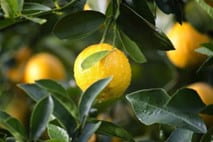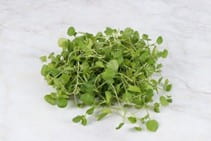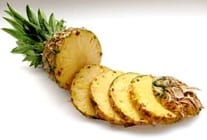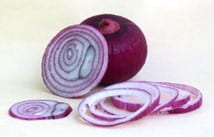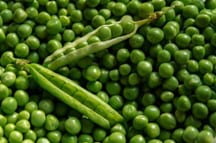|
● Apricots are available fresh, canned, and dried ● Rich in vitamin E and vitamin C to protect skin cells ● Good source of potassium that improves nerve and muscle function ● Apricots have flavonoids which help to protect and strengthen your blood vessels while reducing inflammation ● Apricots contain a high-water content; one cup offers 2/3 of a cup of water ● Flavors range from sweet to sweet-tart, depending on the variety ● Originated in China, where it was first cultivated about 4,000 years ago ● Turkey and Iran are the world’s largest producer of apricots today ● There are 11 different varieties including Blenheim, Tilton, and Moorpark |
|
● Asparagus is a good source of fiber, folate, and vitamin A, C, E, and K ● Rich in antioxidants that helps to reduce inflammation ● Helps give the brain a booster to prevent cognitive impairment ● Asparagus is a detoxifying compound that helps break down harmful compounds which helps fight cancer ● Available fresh, frozen, or canned ● Asparagus is a tasty, versatile vegetable that can be cooked in various ways or enjoyed raw in salads ● Contains high levels of asparagine, which serves as a natural diuretic and helps the body reduce excess salts ● There are three types of asparagus: green, white, and purple ● White asparagus are more delicate and difficult to harvest, and purple asparagus are smaller and fruitier in flavor |
|
● Good source of potassium that helps lower blood pressure ● High in Vitamin B6 and C which may reduce the risk of cancer and diabetes ● Bananas contain several healthy antioxidants, responsible for reduced risk of heart disease ● Native to Southeast Asia and grown in many warmer areas of the world ● Many types and sizes exist, colors ranging from green to yellow and even some red ● Available fresh, frozen, and dried ● During ripening, starch is converted into sugars and reaches more than 16% of the fresh weight ● It is considered one of the most consumed fruits ● Other banana varieties include plantains and red bananas ● About 50 billion tones of Cavendish bananas are produced globally each year ● There are more than 1,000 varieties of bananas grown, but Cavendish is the most commercialized |
|
● High in Vitamin K which help with strong bones and reduce the risk of osteoporosis ● Contain carotenoids, substances that protect the eyes ● Rich in antioxidants that help reduce inflammation ● Leeks can be sliced in a salad, added to a roasted dish or soup, or used as a topping to finish a dish ● Farmers grow leeks in trenches to help keep the bulb white ● Leeks can be enjoyed cooked or raw ● The water and fiber in leeks can provide a feeling of fullness that can reduce overeating ● Like onions, leeks are root vegetables that have a mild, sweet flavor ● Greek philosopher Aristotle used a leek diet to create a clear strong voice |
|
● Great source of Vitamin C and B6 that help with immune function, skin health, and metabolism ● Eating lemons may lower your risk of heart disease, cancer, and kidney stones ● High in potassium which helps to lower blood pressure and maintains positive heart health ● Plant compounds in lemons may have beneficial effects on cancer, cardiovascular disease, and inflammation ● Pectin is the main fiber in lemons which helps to lower blood sugar levels ● Lemons are native to Asia. They grow on lemon trees and are a hybrid of the original citron and lime ● Due to the sour taste, lemons are typically a garnish or juiced ● The high acidity of lemons makes them good cleaning aids ● Lemon trees can produce up to 600 pounds of lemons every year ● California and Arizona produce most of the United States’ lemon crop https://www.healthline.com/nutrition/6-lemon-health-benefits#TOC_TITLE_HDR_2 |
|
● Rich in Vitamin C which aids the immune system, helps the body absorb iron and promotes cell growth ● Contains Vitamin A to help maintain a healthy body ● They offer magnesium and potassium which helps maintain a healthy blood flow ● Mango has digestive enzymes, water, and dietary fiber that aid various aspects of digestive health ● Have powerful plant compounds that act as antioxidants to protect the body ● Originating in India around 5,000 years ago, mangos are one of the most widely consumed fruits in the world ● Available fresh, frozen, canned, and dried ● Mango is often referred to as the “king of fruits” ● Enjoy mango in smoothies, salsa, salads, on top of a burger or seafood dish https://www.healthline.com/nutrition/mango#8.-May-support-eye-health |
|
● Watercress are high in phytochemicals, which reduce the risk of developing certain types of cancer ● Rich in vitamin K which is necessary for blood clotting and healthy bones ● High in antioxidants that help to lower the risk of several chronic illnesses such as diabetes, cancer, and heart disease ● High in vitamin C that boost the immune system ● Contains carotenoids lutein and zeaxanthin which are essential for eye health ● Ranked number one on the US Centers for Disease Control’s Powerhouse vegetables list ● Watercress are small, round leaves, and edible stems that have a peppery, slightly spicy flavor ● First cultivated in the UK in the early 1800s ● Watercress best eaten raw or lightly steamed and used in a wide variety of dishes https://www.healthline.com/nutrition/watercress-benefits#TOC_TITLE_HDR_11 |
|
● Pineapples are rich in vitamin C which is essential for growth and development and a healthy immune system ● High in manganese that maintains a healthy metabolism ● Loaded with antioxidants that may reduce the risk of chronic diseases such as heart disease, diabetes, and certain cancers ● Pineapples contain digestive enzymes that break down proteins and aid in digestion ● Contain bromelain which has anti-inflammatory properties that provide pain relief for arthritis ● Eating pineapples may reduce the time it takes to recover from surgery or exercise ● Originated in South America, where early European explorers named it after its resemblance to a pinecone ● Pineapples are a sweet, convenient, and easy to incorporate into your diet ● Available fresh, canned, or frozen ● Enjoyed in smoothies, salads, or on homemade pizzas |
|
● Rich in Vitamin C and B6 that supports immune function and maintenance of skin and hair ● High in plant compounds and antioxidants which reduce inflammation ● Onions have good source of fiber which helps the digestive tract ● Eating vegetables of the Allium genus have been linked to a lower risk of certain cancers ● Commonly used as a flavoring or side dish ● Can be baked, boiled, grilled, fried, roasted, sauteed, powdered, or eaten raw ● Vary in size, shape, and color but most common types are white, yellow, and red ● Onions can easily be added to savory dishes, including eggs, guacamole, meat dishes, soups, and baked goods ● There are less than 1,000 onion farmers in the United States https://www.healthline.com/nutrition/onion-benefits#TOC_TITLE_HDR_11 |
|
● Peas are rich in vitamin K, C, and A which all help to reduce the risk of diabetes ● High in fiber and protein which makes them so filling and slows digestion ● They have a low glycemic index which is an important factor for blood sugar control ● Peas were used in the early exploration of genetics ● Available in frozen, fresh, or canned varieties ● Since peas are high in starches, they are considered a starchy vegetable ● There are several different varieties of peas available, including yellow peas, black-eyed peas, and purple peas ● The average pea weighs between 0.1 and 0.36 grams https://www.healthline.com/nutrition/green-peas-are-healthy#TOC_TITLE_HDR_2
|




